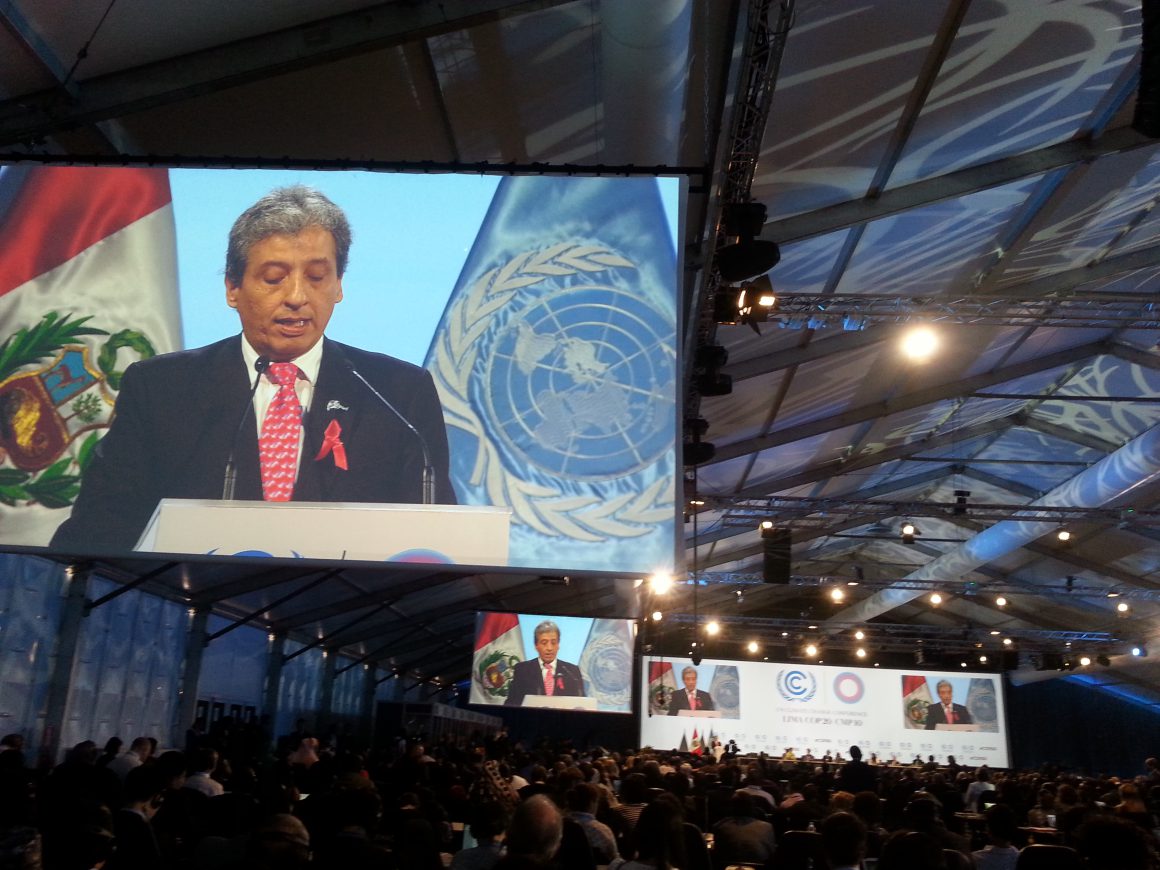On Sunday, 14 December 2014, in the early hours of the morning, representatives of all UN member countries and the European Union finally agreed on the “Lima Call for Climate Action”. This crucial result came after two weeks of exhausting deliberations at the conference but also prior. If one reads the three-and-a-half pages of this decision one will see much repetition of code words that may not mean much to non-negotiators, certainly not in terms of the urgent action needed to address this major challenge humanity is facing. The question easily arises: is all this diplomatic commotion of any use? How is it connected, if at all, to the real world of climate impact (increasingly severe natural disasters, sea-level rise, species extinction, disease expansion) and much-needed climate action?
The recently-published “Fifth Assessment Report” of the Intergovernmental Panel on Climate Change (IPCC) contains the current consensus among the world’s scientists and policy-makers on the extent to which climate change is caused by human activity, its consequences, and what can be done to deal with both its causes (mitigation) and its effects (adaptation). The IPCC report states that it is greenhouse gas emissions caused by human activity that are “extremely likely to have been the dominant cause of the observed warming since the mid-20th century”. It is yet another manifestation of this latest geological era – the “Anthropocene” – which is characterized by the major impact humanity has on the surface of planet Earth, bigger than any individual force of nature. It is in this context that countries met this year in Lima, for the annual climate change conference, and will meet again at next year’s conference to be held in Paris. There are great expectations from the Paris conference, which is meant to conclude a major new agreement that will determine what needs to be done and, more importantly, by whom and with what resources from 2020 onwards.
Despite what governments may be telling their citizens, posturing as they do internally and externally, they all accept that climate change is a serious problem that needs urgent attention. What each government tries to do, though, is to shift the burden of action to somebody else and/or to a later time, for economic, electoral and other short-term motives.
There are some principles that could help resolve disagreements on who should do what, but even those are honoured mostly in words and not in deeds. The most famous – or infamous, depending on ones’ standpoint – is the principle of “common but differentiated responsibilities and respective capabilities”. Essentially, this means that all countries have responsibilities vis-à-vis the global challenge that is climate change, but the burden of action falls primarily on those who contributed the most in generating the problem, and those who have the capacity or the means to do something about it.
This is traditionally interpreted as an obligation on developed countries, which have been emitting CO2 since the beginning of the Industrial Revolution. The 1992 UN Framework Convention on Climate Change (UNFCCC), and its 1997 Kyoto Protocol, divide countries between “Annex I” and “non-Annex I”, developed and developing respectively, imposing no concrete emission reduction obligations on the latter. This looks quite unreal today, especially when applied to an industrial heavyweight such as China, which has overtaken the USA as the world’s top CO2 emitter. China’s emissions, however, benefit the rest of the world to a significant extent, where “Made in China” products are consumed. Even in this light, it is not just developed country representatives who could reasonably argue that China has a responsibility for the scale of its emissions and the energy sources it uses. And that such responsibility should lead to action, in view of China’s extensive capabilities today.
The Chinese Government itself is clearly aware of the national and global consequences of rampant climate change, and is determined to act. It tries to regulate greenhouse gas emissions internally – through central planning, incentives and counter-incentives, as well as carbon-trading schemes – but without undertaking formal obligations that would open it up to international scrutiny. The US has also been a tough international partner, refusing to join the Kyoto Protocol, and always keeping its options open. Until November 2014, that is, when China and the US made a joint announcement, and undertook mutual commitments, for emission reductions and the peaking of emissions, respectively. The EU had already announced, in October 2014, its ambitious emission reduction targets for 2030.
These announcements created a positive atmosphere at the start of the Lima conference. But differences in interests remain, and showed clearly again in the difficulty in reaching a decision, and in the vagueness of the content of the eventual decision. A 37-page draft document attached to the Lima decision contains elements and options that will eventually be shaped into the final agreement for Paris. If what happened in Lima is any indicator, sealing the deal in Paris will require a lot of patience, attention to the interests of all groups of countries, and balancing commitments for mitigation and adaptation with adequate financing and technology transfer.
Sealing the deal in Paris will also require leadership, which in Lima came from the conference presidency, headed by the Environment Minister of Peru, as well as the “G2”, that is the US and China that used their influence to guarantee overall consensus. The European Union was a positive presence but again, seemed absorbed by its internal balances, and unable to project strength, flexibility and strategic vision in the negotiations. The burden on the French Presidency of next year’s conference (Paris, 30 November-11 December 2015) is big: how to facilitate the birth of a global agreement that satisfies the basic interests of all, and is meaningful for the planet.



